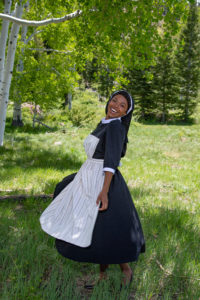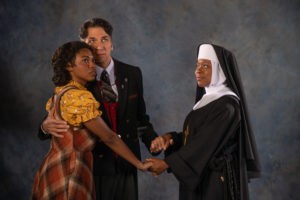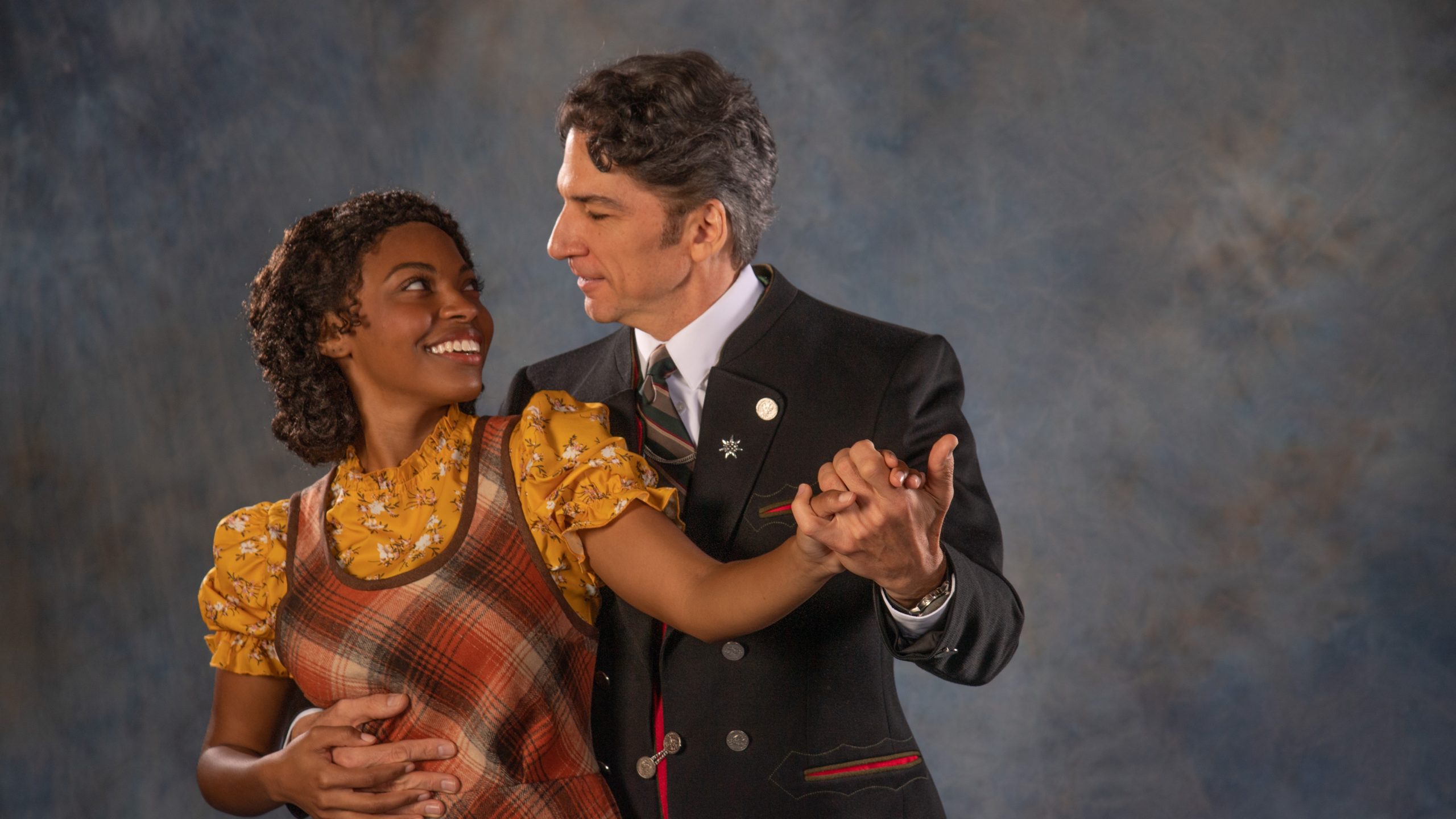CEDAR CITY — The Sound of Music has never waned in popularity since its Broadway premiere in 1959. But this year in Utah, the show is enjoying a surge in its already-high popularity. UTBA is scheduled to review at least four productions of the musical in 2022, and there are at least three other productions in the state announced this year. The most prominent production of The Sound of Music just opened at the Utah Shakespeare Festival, and every scene and song is a vivid reminder of why this show is so beloved.

As Maria, Daria Pilar Redus brings joy to every song she sings. In the title song, Redus revels in every note in Rodgers and Hammerstein‘s score, and her pure voice, with its gentle legato connecting the notes, is a pleasure to listen to. This is a woman whose “heart has been blessed with the sound of music,” because no one can make the score as gratifying as Redus does without truly knowing the power of music.
Redus is no less impressive in her acting. She won me over completely when acting like she was improvising the music lesson that is “Do Re Mi.” Her best moments, though, are when Maria is standing up to Captain von Trapp; Redus takes Maria’s youth and inexperience and weaponizes them to tell him what she really thinks without worrying about the consequences. This Maria grows up, though, and in the reprise of “Sixteen Going on Seventeen,” I enjoyed watching her give motherly advice to Liesl (played by Julia Kuzmich).

Given Redus’s multidimensional performance, it is a godsend that Michael Sharon plays Captain von Trapp as a grieving widower and caring father — and not merely a wooden caricature. In Sharon’s performance, the captain can be changed by the dazzling Maria because he is already in touch with his heart. Importantly, the character also has a spine. Sharon is inspiring when his character vows to defy the Nazis, and the character shows the determination of a military planner for the entire second act.
Speaking of refreshing takes on a well-known character, Melinda Parrett humanizes Baroness Schraeder. While the script still extols the character’s wealth, Parrett is not snooty in her performance, and her likeable demeanor and worldly sophistication make the Baroness an enticing character. (No wonder Captain von Trapp almost married her!) Michael Fitzpatrick is oddly loveable as Max Detweiler. While Max is still self-serving, his charm and wit make it apparent why Captain von Trapp keeps him around. Max serves as an obvious foil for Captain von Trapp and — in true Shakespearean fashion — his sleazy amorality (shown best in the deceptively upbeat “No Way to Stop It”) is a mirror opposite of the captain’s decision to stand up for his beliefs.
Finally, Lisa Strum gave a lovely performance as the Mother Abbess. The rousing “Climb Ev’ry Mountain” was a highlight of the performance. But I also loved how the character and Maria bond over “My Favorite Things” and the loving but firm way she would counsel Maria.

Directing and choreographing this strong cast is Keenon Hooks. I appreciated the dynamic directing style, which prioritized movement and kept the action flowing. For example, Hooks moved the nuns around the stage like chess pieces during the Latin singing, which was echoed at a faster pace in “I Have Confidence” when Maria left the abbey to enter the world. Hooks has a keen eye for detail; I loved the giddy way that the captain and Maria ran off stage after deciding to get married, or the bits of polka thrown into “Sixteen Going on Seventeen.” Hooks was always prepared to throw a little extra twist into a scene or a dance to make it unique.
Hooks gets the singing and dancing right, and the show’s fans will appreciate that. But, more importantly, his direction focuses on the message of Howard Lindsay and Russel Crouse‘s script. The Sound of Music is not really about adorable little moppets learning how to sing. It is about standing up for one’s beliefs and freedoms, even when the cost is high. Hooks’s deliberate pacing of the second act and the forceful performance from Sharon make that message come through clearly.
Jo Winiarski‘s unit set consisted of a sweeping curved staircase that rose from stage left to a height of about 30 feet to a stage right exit. There was also a tall pillar at stage right with white cloth draped over it. The staircase, cyclorama, and stage right pillar served as screens for Hannah Tran’s projections, which usually consisted of softly blurred images reminiscent of mountains or buildings, with some projections just showing abstract colors. It all looked fine, but the design was confusing when Maria’s first entrance was on the staircase because it seemed like she was already in the von Trapp mansion, instead of the mountains. The set also served as a nice canvas for William Kirkham’s lighting design,
The Utah Shakespeare Festival shows the simple reason why The Sound of Music has been so enduring: it is a lovely play. And when given a smart director, a talented cast, and leads deeply invested in their roles unite, the show becomes sublime. Audiences have loved The Sound of Music for over 60 years, and after seeing the Utah Shakespeare Festival’s production, they will love it for 60 more.
[box]The Utah Shakespeare Festival production of The Sound of Music plays various dates at 2 PM or 8 PM through October 8 at the Randall L. Jones Theatre on the campus of Southern Utah University. Tickets are $50-80. For more information, visit bard.org.[/box]

